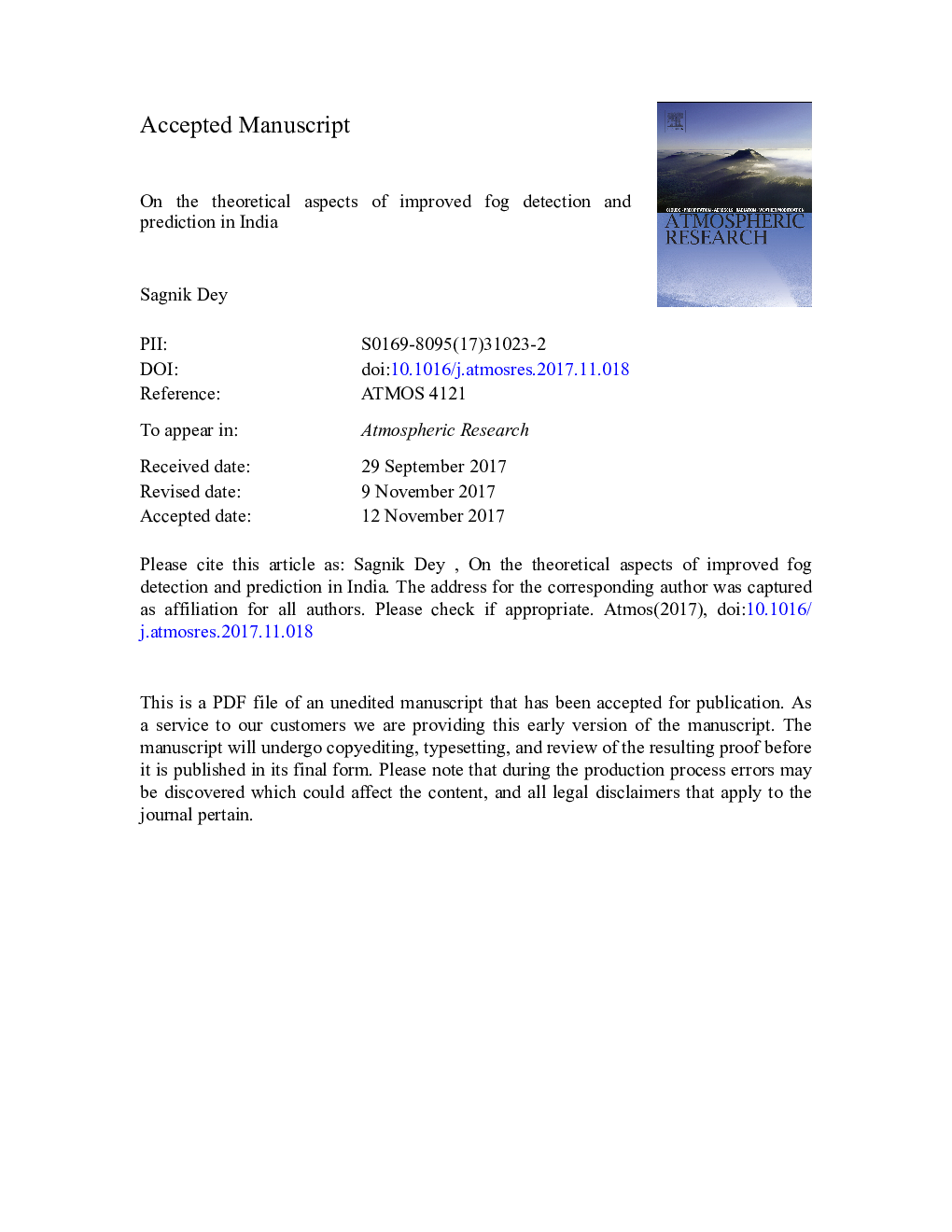| Article ID | Journal | Published Year | Pages | File Type |
|---|---|---|---|---|
| 8864825 | Atmospheric Research | 2018 | 17 Pages |
Abstract
The polluted Indo-Gangetic Basin (IGB) in northern India experiences fog (a condition when visibility degrades below 1Â km) every winter (Dec-Jan) causing a massive loss of economy and even loss of life due to accidents. This can be minimized by improved fog detection (especially at night) and forecasting so that activities can be reorganized accordingly. Satellites detect fog at night by a positive brightness temperature difference (BTD). However, fixing the right BTD threshold holds the key to accuracy. Here I demonstrate the sensitivity of BTD in response to changes in fog and surface emissivity and their temperatures and justify a new BTD threshold. Further I quantify the dependence of critical fog droplet number concentration, NF (i.e. minimum fog concentration required to degrade visibility below 1Â km) on liquid water content (LWC). NF decreases exponentially with an increase in LWC from 0.01 to 1Â g/m3, beyond which it stabilizes. A 10 times low bias in simulated LWC below 1Â g/m3 would require 107 times higher aerosol concentration to form the required number of fog droplets. These results provide the theoretical aspects that will help improving the existing fog detection algorithm and fog forecasting by numerical models in India.
Related Topics
Physical Sciences and Engineering
Earth and Planetary Sciences
Atmospheric Science
Authors
Sagnik Dey,
